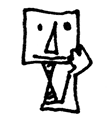
Perhaps what we call nature today isn’t nature after all. Let’s take a look at the intricate relationships between the city, the woods, and ourselves.
“What can all that green stuff be?” asked Lewis Carroll’s Alice, as she dreamed the familiar dream, observing the world from the distance of her suddenly elongating neck. Alice’s Adventures in Wonderland was published during the Second Industrial Revolution, when the sense of departure from nature was yet to come, like a waking dream. In living through an era when glass and plastic separate humans not only from greenery, but also from other people, what can a person of the fourth revolution dream of today?
“‘Come, my head’s free at last!’ said Alice in a tone of delight, which changed into alarm in another moment, when she found that her shoulders were nowhere to be found: all she could see when she looked down, was an immense length of neck, which seemed to rise like a stalk out of a sea of green leaves that lay far below her.” In her dream, Carroll’s heroine experiences such wonders and fears over and over again. At times, she’s too small to climb a table, and too large to walk through the door and free herself from the inside of








